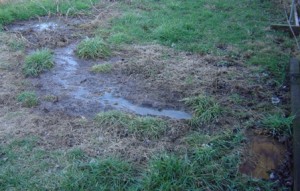How to Tell If Your Septic Tank is Full
Published on August 20, 2014
When properly maintained, a septic system can provide your home with a way to manage the wastewater it  generates. The system must be pumped regularly, though, and many people are unsure as to when this action is necessary. There are several factors that influence how often your system must be pumped, and there are a variety of techniques you can use to determine whether or not your tank is full.
generates. The system must be pumped regularly, though, and many people are unsure as to when this action is necessary. There are several factors that influence how often your system must be pumped, and there are a variety of techniques you can use to determine whether or not your tank is full.
The Causes of Scum Buildup
Even if you are having no issues with your septic system, you should still have it inspected approximately every three years and you can see this here to know how this differs from each property. Systems that use electrical or mechanical components may require even more frequent inspections. There are four major factors that will influence the rate at which your tank fills up:
- The number of people in your household
- The amount of water used in your house
- The volume of solids in the wastewater
- The size of the septic tank
All of these elements can contribute to scum buildup in your system, and a skilled residential and commercial plumbing professional should be able to determine whether or not your tank needs septic tank pumping service by analyzing the effects of these factors. They may also suggest if your septic system needs new plumbing parts.
Inspecting Your Own Tank
Three years is the typical interim between septic system inspections, but your tank can still become full during this time. Therefore you must have a way to inspect the system independently, and installing risers around the tank is one possible method you could use. These devices provide you with an easy way to examine the inside of the tank. If you open the lid and notice a large amount of solids accumulating, then you contact a professional service to empty the system through septic tank pumping.
Another warning sign that you can observe within your tank is the level of sludge that is present. Once this substance comes within a foot of the outlet tee, the tank needs to be pumped. A scum layer that reaches six inches below the outlet tee is also a sign that your system is on the verge of backing up.
Leaking Pipes and Pooling Water
The area around the septic tank can also be an indicator of a congested system. There are pipes that extend to the tank all throughout your property, and as the system begins to clog, water and waste can begin to seep from the pipes and generate puddles around the base of the tank. The increased levels of water can affect the grass around your tank by causing it to grow at an increased rate. Grass that appears greener and healthier than it does in other areas of your yard is a sign that your tank is at capacity. Naturally septic pipes can be found within your home as well. With a flashlight you can inspect them to see if they are beginning to spring leaks.
Examining Toilets and Drainage Pipes
All of the devices that connect to the septic system can display signs that the tank is at full capacity. Toilets, in particular, should be checked for any functional issues. If the toilet reacts slowly when you flush it, then it may be an indication that your septic system is too full.
You should also be examining any location in your home where drainage pipes exit. Washing machine pipes, dishwasher pipes, and sinks are all important areas to inspect. Pipes that take a long time to drain water are warnings of a clogged tank, and it is also not uncommon for waste to start backing up through your pipes and fill your home with a foul odor. This is a form of worst-case scenario, and you should contact a professional service immediately if this event occurs.
Maintaining Your Septic System
There are a variety of ways for you to determine is your tank is full. In addition to having an inspection service review your system on a regular basis, you also have ways to conduct your own form of examination. Mysterious pools of water and leaky pipes are simple ways of identifying a septic problem. You can also open the lid of the tank to observe the levels of sludge and scum that are collecting. Even a basic inspection of your toilets and drainage pipes can yield helpful information.
Your septic tank is able to handle the vast amounts of waste generated by your home, but it is not impervious to maintenance issues. By conducting regular inspections on your tank, though, you can make sure that your septic system is able to continue performing its valuable and essential functions.
Sources: